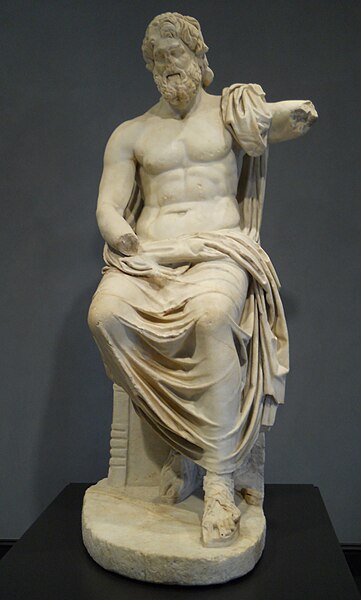Helen, also known as Helen of Troy, in Latin as Helena, beautiful Helen, Helen of Argos, or Helen of Sparta, was a figure in Greek mythology said to have been the most beautiful woman in the world. She was believed to have been the daughter of Zeus and Leda, and was the sister of Clytemnestra, Castor and Pollux, Philonoe, Phoebe and Timandra. She was married to King Menelaus of Sparta "who became by her the father of Hermione, and, according to others, of Nicostratus also." Her abduction by Paris of Troy was the most immediate cause of the Trojan War.
Helen of Sparta boards a ship for Troy, fresco from the House of the Tragic Poet in Pompeii
Helen boards a ship for Troy, fresco from the House of the Tragic Poet in Pompeii
The Love of Helen and Paris by Jacques-Louis David (oil on canvas, 1788, Louvre, Paris)
Leda and the Swan by Cesare da Sesto (c. 1506–1510, Wilton). The artist has been intrigued by the idea of Helen's unconventional birth; she and Clytemnestra are shown emerging from one egg; Castor and Pollux from another.
Zeus is the sky and thunder god in ancient Greek religion and mythology, who rules as king of the gods on Mount Olympus. His name is cognate with the first syllable of his Roman equivalent Jupiter.
Zeus holding a thunderbolt. Zeus de Smyrne, discovered in Smyrna in 1680.
"Cave of Zeus", Mount Ida, Crete
1st century BC statue of Zeus
Zeus (centre-left) battles against Porphyrion (far-right), detail of the Gigantomachy frieze from the Pergamon Altar, Pergamon Museum, Berlin.







